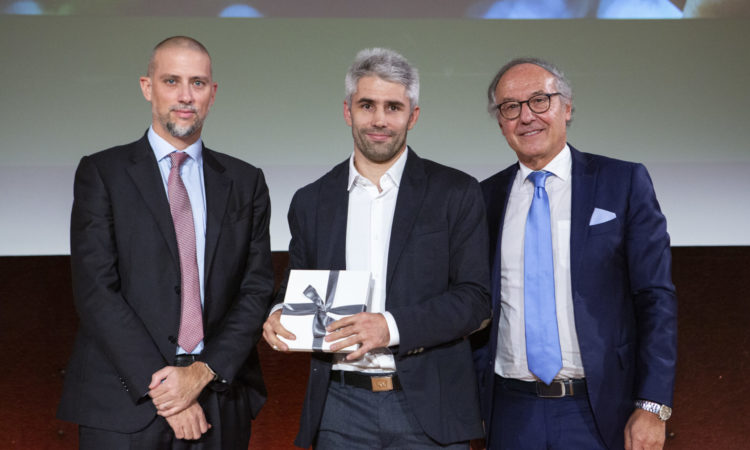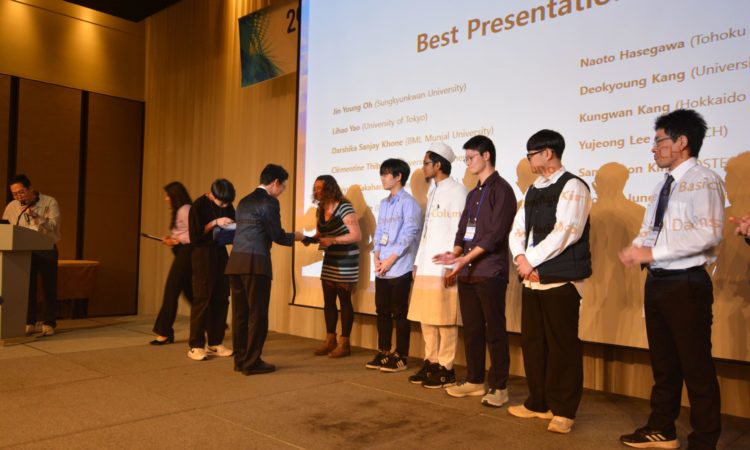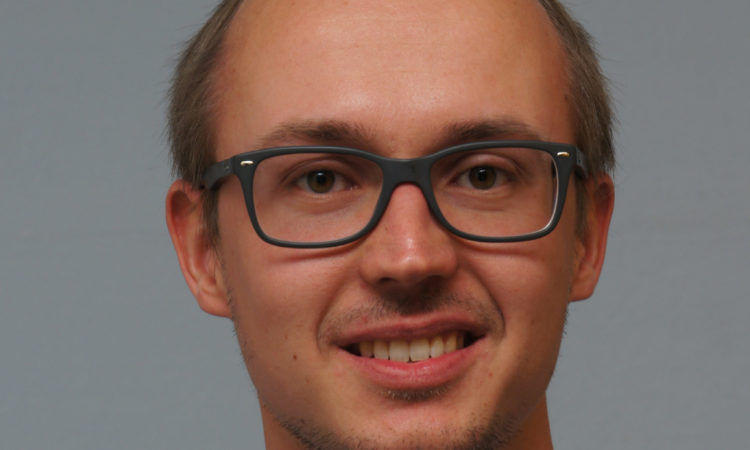Jean-Marc Triscone receives the EPS award – Highlight on his work
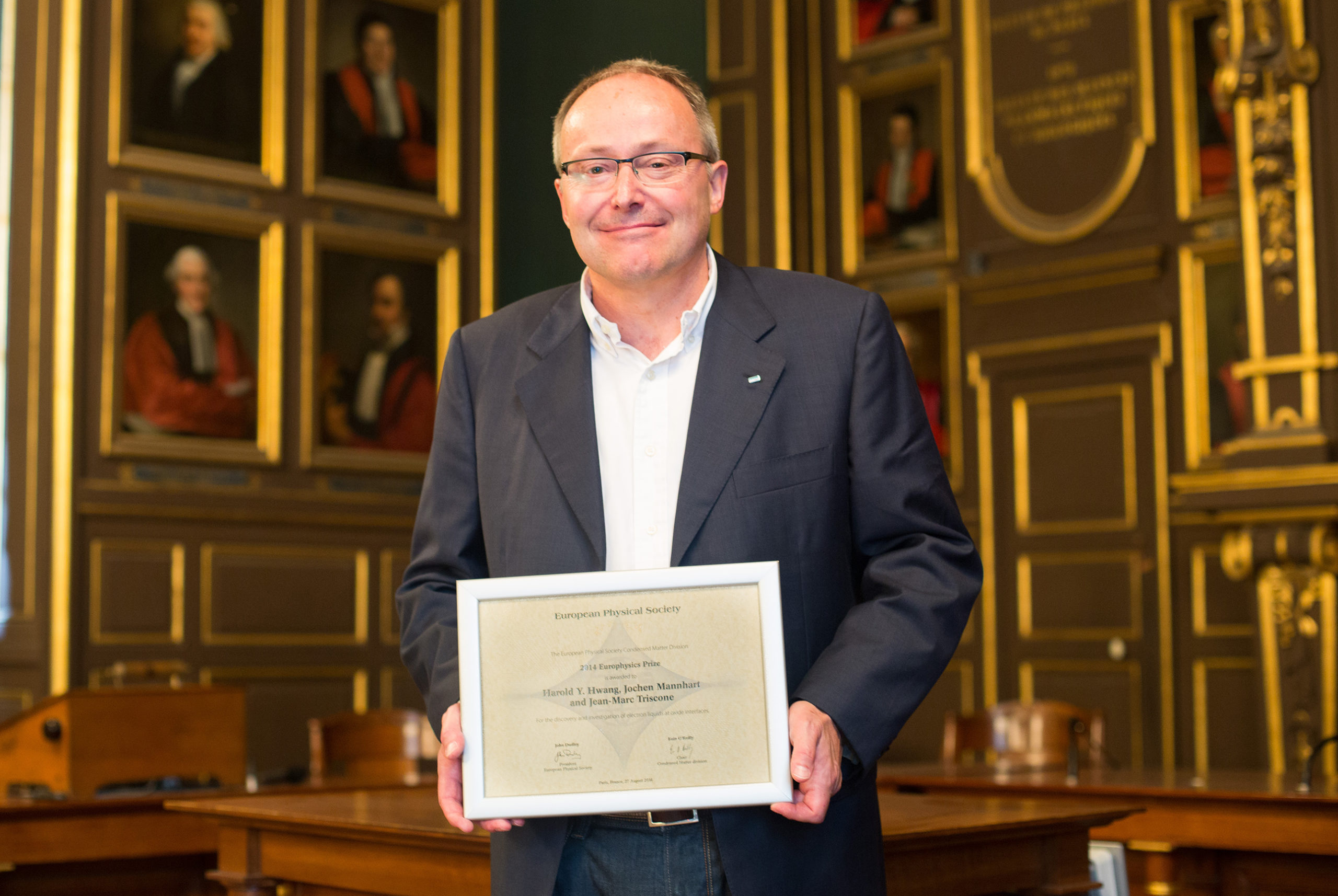
For the “discovery and investigation of electron liquids at oxide interfaces”, Prof. Jean-Marc Triscone was awarded the 2014 European Physical Society Condensed Matter Division Europhysics Prize. He shares this distinction with Prof. Harold Y. Hwang (University of Stanford) and Prof. Jochen Mannhart (Max Plank Institute).
This Europhysics prize is one of Europe’s most significant distinction in the field of condensed matter physics. It is given every 2 years in appreciation of recent work and scientific excellence to one or more individuals in the area of condensed matter physics.
Prof. Jean-Marc Triscone was Director of the Condensed Matter Physics Department in Geneva from 2000 to 2007. Between 2004 and 2007 he was Vice Dean and since 2007 he his Dean of the Faculty of Science. Between 2001 and 2007 he was deputy director of the Swiss National Centre of Competence in Research on Materials with Novel Electronic Properties, MaNEP. The current research of Prof. Triscone focuses on oxide heterostructures and oxide interface physics and engineering based on superconductors, dielectric, ferroelectric and ferromagnetic materials.
More information about Jean-Marc Triscone group
Highlight on his work by Céline Lichtensteiger, UNIGE
Summary of the work – How it started
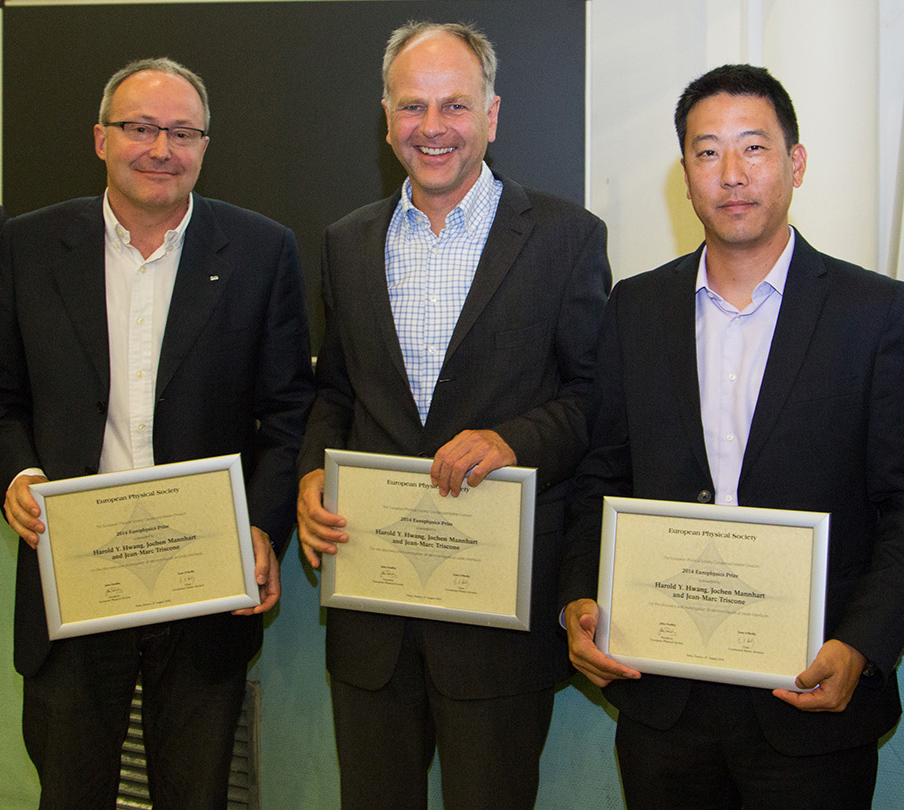
In 2004, the physicist Harold Hwang, who was then working at Bell labs and the University of Tokyo, studied the combination of two insulating materials, LaAlO3 (LAO) and SrTiO3 (STO). He discovered that between a single crystal of STO and a thin layer of LAO, the interface itself is not insulating, but unexpectedly conducting with a relatively high mobility, forming a two-dimensional conducting layer at the interface [1]. Intrigued by this result, Jean-Marc Triscone, from the University of Geneva, and Jochen Mannhart, from the Max Planck Institute in Stuttgart, launched different studies to learn more about this surprising system. They discovered with their collaborators in 2007 that this system is superconducting at low temperatures (Tc is about 300mK) and that superconductivity can be controlled by an electric field. This effect allows for the first time the on-off switching of superconductivity at low temperatures [2,3]. Beyond superconductivity, the system has revealed a strong spin-orbit coupling, magnetic effects, and signatures of electronic correlations pointing to a 2-dimensional electron liquid (2DEL), quite different from the 2-dimensional electron gases studied in semiconductor structures.
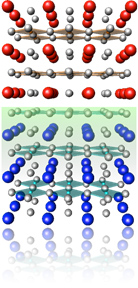
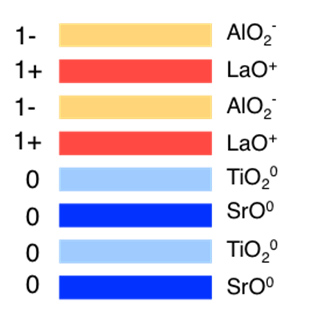
Figure 1. The LAO/STO interface structure.
Left, the atomic structure (red La, blue Sr) and in transparent green the conducting layer.
Right, the stacking of planes. The SrO and TiO2 planes in SrTiO3 are neutral whereas the LaO and AlO2 planes are charges +1 and -1 respectively.
More details
Taken independently, both LAO and STO are good insulators. But when a very thin epitaxial layer of LAO is deposited on top of a crystal of STO (in the (001) direction), a 2DEL appears at the interface, with surprising properties. This unexpected 2DEL appears only if the STO crystal that consists of alternating planes of SrO and TiO2 terminates with a TiO2 plane. Another requirement is that the thickness of the LAO film deposited on top of the STO crystal has to be larger than 3 unit cells, corresponding to a minimum critical thickness of 1.6 nanometers (4 unit cells). The structure is shown in Fig. 1.
For a thickness of LAO slightly lower than this critical thickness, the interface is insulating, but the application of an electric field induces the conducting state. The electric field can also be used to tune the properties of the already present 2DEL for LAO films thicker than the critical thickness. The use of an electric field to tune the physical properties is known as the field-effect.
In 2007, while working at low temperatures, the Stuttgart and Geneva teams found this interface to be not only conducting, but superconducting [2]. One year later, they demonstrated that the ground state of the system could be tuned using field-effect, allowing superconductivity to be switched on and off as shown on Fig. 2 [3].
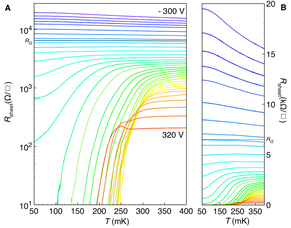
Figure 2. From reference 3. Sheet resistance versus temperature on a log (left) and linear (right) scale and as a functionof a back gate voltage (-300V to 320V) showing how the system is evolving from a weakly insulating state at -300V to a superconducting state.
In 2010, Jean-Marc Triscone and his group showed that an electric field, that allows the carrier density to be tuned, modifies the spin-orbit scattering time [4]. This effect is linked to a Rashba spin-orbit interaction that is of interest for spintronics applications. Studying in-plane magnetoresistance oscillations, further allowed the role of this large Rashba spin-orbit interaction in the band structure to be revealed [5]. Further information on the complex Fermi surface of the LAO/STO 2DEL could be obtained in the quantum regime by the analysis of Shubnikov-de Haas oscillations in the magnetoresistance of high mobility samples [6].
The origin of the conductivity at the interface between LAO and STO continues to be debated. Different scenarios have been proposed, including the polar-catastrophe scenario (and other scenarios linked to the polar discontinuity at the interface), interfacial intermixing and oxygen vacancies.
If we consider these two materials in more details, we see that these oxides are composed of alternating planes: SrO and TiO2 for STO, and LaO and AlO2 for LAO (See Fig. 1, right). In STO, both types of planes are charge neutral, while they are alternatively charged positively and negatively for LAO. In the polar catastrophe scenario, the succession of these charged planes induces a voltage build-up that becomes too large at a critical thickness (1.6 nm) and results in a transfer of electrons from the surface towards the interface, giving rise to the observed 2DEL. In other scenarios, the 2DEL comes from the intermixing of the two materials at the interface, or from defects such as oxygen vacancies. As detailed just below, several experiments point to the key role played by the polar discontinuity found at the LAO/STO interface.
In 2012, in a collaboration with Philip Willmott (Paul Scherrer Institut) and Philippe Ghosez (University of Liège), the LAO was replaced by a solid solution of LAO and STO, noted LASTO:x, x being the proportion of STO. Each charged plane in LAO is therefore replaced by a mixed plane with a proportionally reduced charge. A simple model for the polar catastrophe scenario shows that the critical thickness for the appearance of the 2DEL increases with x, which was precisely confirmed experimentally. This study of the transport properties of LASTO:x as a function of film thickness and x provided overwhelming evidence in favor of the intrinsic polar-catastrophe mechanism [7].
Conclusion
The LAO/STO system is continuously bringing surprises and there is still a lot of fun ahead of the scientists. What is becoming more and more obvious is that the very special electronic structure linked to the confinement of the electrons and the breaking of inversion symmetry is a key to understanding the complex properties of this amazing system [8].
The study of interface phenomena in oxides and novel heterostructures is nowadays rapidly developing worldwide. The goal of this research area is to achieve novel and complex functionalities in artificial materials allowing novel routes to design advanced devices.
[1] A High-Mobility Electron Gas at the LaAlO3/SrTiO3 Heterointerface
Ohtomo, A., & Hwang, H. Y. (2004). Nature, 427(6973), 423–426. doi:10.1038/nature02308
[2] Superconducting Interfaces Between Insulating Oxides
N. Reyren, S. Thiel, A. D. Caviglia, L. Fitting Kourkoutis, G. Hammer, C. Richter, C. W. Schneider, T. Kopp, A.-S. Rüetschi, D. Jaccard, M. Gabay, D. A. Muller, J.-M. Triscone, J. Mannhart
Science 317, 1196 (2007).
[3] Electric field control of the LaAlO3/SrTiO3 interface ground state
A. D. Caviglia, S. Gariglio, N. Reyren, D. Jaccard, T. Schneider, M. Gabay, S. Thiel, G. Hammerl, J. Mannhart and J.-M. Triscone
Nature 456, 624-627 (2008).
[4] Tunable Rashba Spin-Orbit Interaction at Oxide Interfaces
A. D. Caviglia, M. Gabay, S. Gariglio, N. Reyren, C. Cancellieri and J.-M. Triscone
Physical Review Letters 104, 126803 (2010).
[5] Rashba induced magnetoconductance oscillations in the LaAlO3/SrTiO3 heterostructure
A. Fête, S. Gariglio, A. D. Caviglia, J.-M. Triscone and M. Gabay
Physical Review B 86, 201105(R) (2012).
[6] Two-Dimensional Quantum Oscillations of the Conductance at LaAlO3/SrTiO3 Interfaces
A. D. Caviglia, S. Gariglio, C. Cancellieri, B. Sacépé, A. Fête, N. Reyren, M. Gabay, A. F. Morpurgo and J.-M. Triscone
Physical Review Letters 105, 236802 (2010).
[7] Tunable conductivity threshold at polar oxide interfaces
M.L. Reinle-Schmitt, C. Cancellieri, D. Li, D. Fontaine, M. Medarde, E. Pomjakushina, C.W. Schneider, S. Gariglio, Ph. Ghosez, J.-M. Triscone and P.R. Willmott
Nature Communications 3, 932 (2012).
[8] Oxide heterostructures: Hund rules with a twist
Marc Gabay and Jean-Marc Triscone
Nature Physics 9, 610 (2013).
